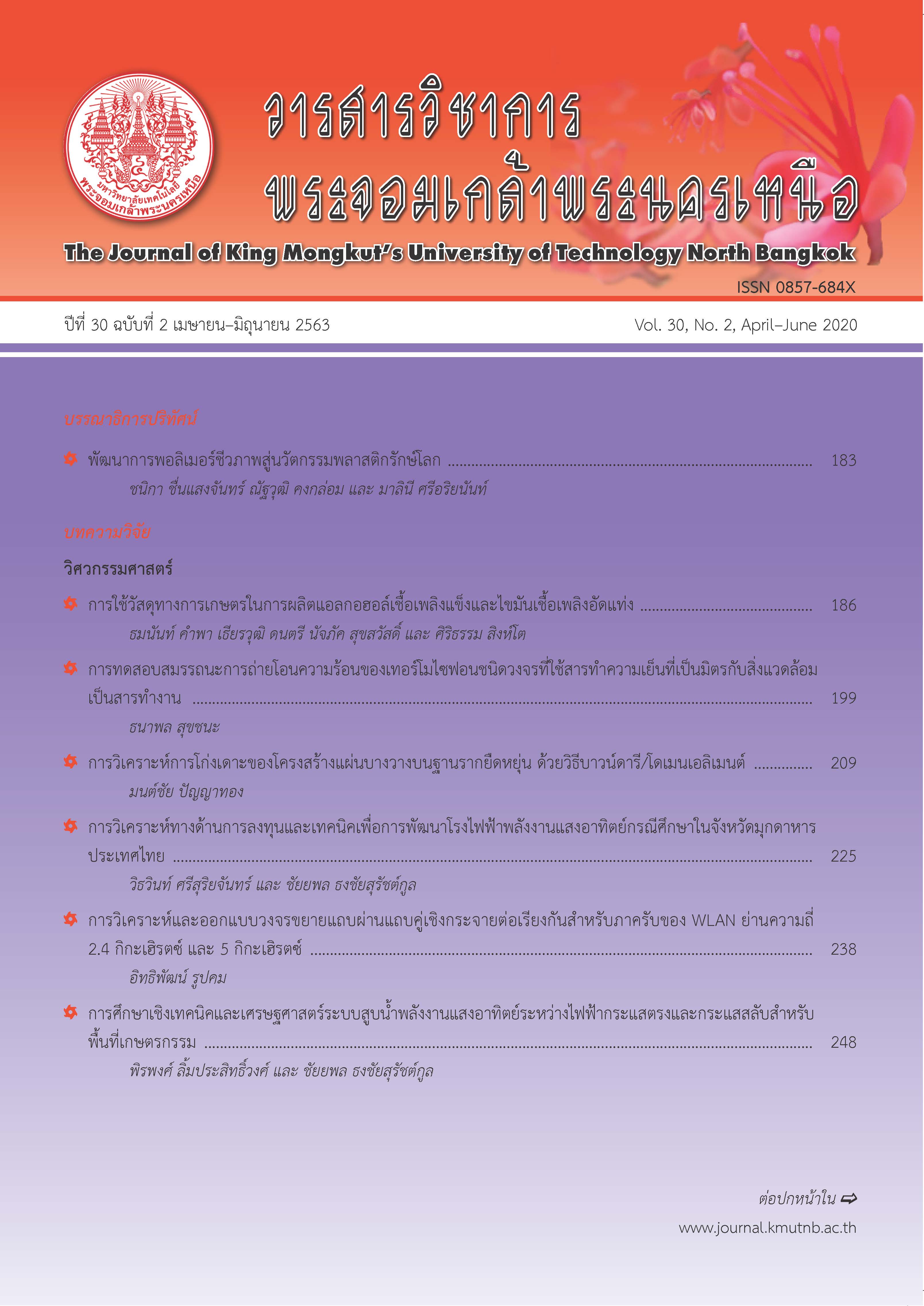ตัวแบบคณิตศาสตร์เชิงกำหนดเพื่อการออมเงินกลางปีด้วยอัตราดอกเบี้ยทบต้น
Main Article Content
บทคัดย่อ
การวิจัยครั้งนี้มีวัตถุประสงค์ 1) เพื่อสร้างตัวแบบคณิตศาสตร์เชิงกำหนดเพื่อการออมเงินกลางปีด้วยอัตราดอกเบี้ยทบต้น และ 2) เพื่อแสดงลักษณะกราฟของผลตอบแทนจากการออมเงินเมื่อครบสิ้นปี ที่คำนวณได้จากตัวแบบคณิตศาสตร์เชิงกำหนดเพื่อการออมเงินกลางปีเปรียบเทียบกับตัวแบบคณิตศาสตร์เพื่อการออมเงินต้นปีและปลายปี จากผลการวิจัยทำให้ได้ 1) ตัวแบบคณิตศาสตร์เชิงกำหนดเพื่อการออมเงินกลางปีด้วยอัตราดอกเบี้ยทบต้น โดยมีตัวแปร คือ จำนวนเงินปัจจุบัน อัตราดอกเบี้ยต่อปี จำนวนครั้งของการทบต้นต่อปี จำนวนครั้งของการออมเงิน ซึ่งพัฒนามาจากตัวแบบมาตรฐานของการคิดอัตราดอกเบี้ยทบต้น และตรวจสอบความถูกต้องโดยใช้การพิสูจน์แบบอุปนัยเชิงคณิตศาสตร์ และ 2) ลักษณะกราฟของผลตอบแทนจากการออมเงินเมื่อครบสิ้นปี ที่คำนวณได้จากการกำหนดค่าเริ่มต้นของตัวแปรค่าเดียวกันลงในตัวแบบคณิตศาสตร์เชิงกำหนดเพื่อการออมเงินกลางปี ตัวแบบคณิตศาสตร์เพื่อการออมเงินต้นปีและปลายปี กราฟแสดงว่าผลตอบแทนของการออมเงินต้นปีมากกว่าผลตอบแทนของการออมเงินกลางปี และผลตอบแทนของการออมเงินกลางปีมากกว่าผลการตอบแทนของการออมเงินปลายปี
Article Details

อนุญาตภายใต้เงื่อนไข Creative Commons Attribution-NonCommercial-NoDerivatives 4.0 International License.
บทความที่ลงตีพิมพ์เป็นข้อคิดเห็นของผู้เขียนเท่านั้น
ผู้เขียนจะต้องเป็นผู้รับผิดชอบต่อผลทางกฎหมายใดๆ ที่อาจเกิดขึ้นจากบทความนั้น
เอกสารอ้างอิง
[2] N. Issaranusorn, S. Rujivan, and K. Mekchay, “Stochastic model for gold price and its application for no-arbitrage gold derivative pricing,” Journal of Nonlinear Analysis and Optimization, vol. 2, pp. 11–17, 2011.
[3] J. Hull, Options, Futures, and other Derivatives, 7 th ed, Peaerson Education Press, 2009. [4] T. Nakabut, Mathematical Modeling. Nakhon Pathom Rajabhat University, 2003 (in Thai).
[5] X. Lee and M. He, “The principal accumulation value of simple and compound interest,” An Indean Journal, vol. 10, no. 18, pp. 10056–10061, 2014.
[6] N. Issaranusorn, “Future saving model by using mathematical technique,” in Proceedings of the 2th National and International Research Conference, Thailand, 2015, pp. 426–435.
[7] N. Issaranusorn., “Saving mathematical model with inconstant present value and inconstant compound interest rate,” in Proceedings of International Congress on Banking, Economics, Finance and Business, Japan, 2016, pp. 241–251.

